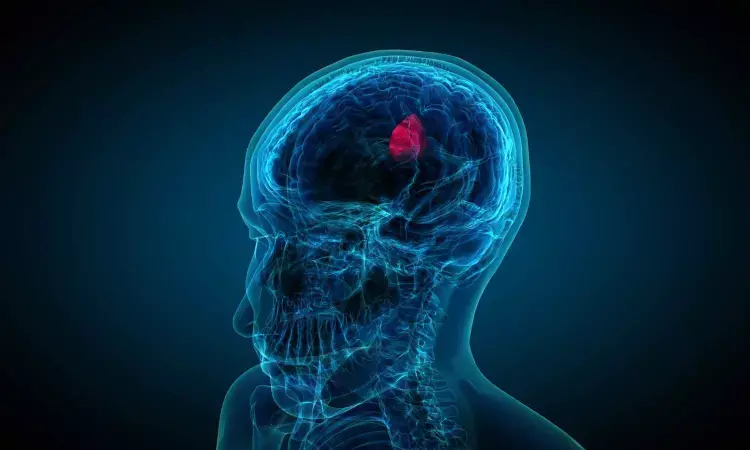- Home
- Medical news & Guidelines
- Anesthesiology
- Cardiology and CTVS
- Critical Care
- Dentistry
- Dermatology
- Diabetes and Endocrinology
- ENT
- Gastroenterology
- Medicine
- Nephrology
- Neurology
- Obstretics-Gynaecology
- Oncology
- Ophthalmology
- Orthopaedics
- Pediatrics-Neonatology
- Psychiatry
- Pulmonology
- Radiology
- Surgery
- Urology
- Laboratory Medicine
- Diet
- Nursing
- Paramedical
- Physiotherapy
- Health news
- Fact Check
- Bone Health Fact Check
- Brain Health Fact Check
- Cancer Related Fact Check
- Child Care Fact Check
- Dental and oral health fact check
- Diabetes and metabolic health fact check
- Diet and Nutrition Fact Check
- Eye and ENT Care Fact Check
- Fitness fact check
- Gut health fact check
- Heart health fact check
- Kidney health fact check
- Medical education fact check
- Men's health fact check
- Respiratory fact check
- Skin and hair care fact check
- Vaccine and Immunization fact check
- Women's health fact check
- AYUSH
- State News
- Andaman and Nicobar Islands
- Andhra Pradesh
- Arunachal Pradesh
- Assam
- Bihar
- Chandigarh
- Chattisgarh
- Dadra and Nagar Haveli
- Daman and Diu
- Delhi
- Goa
- Gujarat
- Haryana
- Himachal Pradesh
- Jammu & Kashmir
- Jharkhand
- Karnataka
- Kerala
- Ladakh
- Lakshadweep
- Madhya Pradesh
- Maharashtra
- Manipur
- Meghalaya
- Mizoram
- Nagaland
- Odisha
- Puducherry
- Punjab
- Rajasthan
- Sikkim
- Tamil Nadu
- Telangana
- Tripura
- Uttar Pradesh
- Uttrakhand
- West Bengal
- Medical Education
- Industry
Vorasidenib a Potential Breakthrough treatment for IDH-Mutant Gliomas

Brain tumors have remained one of the most challenging health concerns to treat, with gliomas leading the charts as the predominant malignant primary brain tumors in adults. Their classification, based on a combined analysis of histologic and molecular features, as delineated by the World Health Organization (WHO), has seen a paradigm shift with the discovery of the role of IDH1 and IDH2 gene mutations. Found in virtually all adult grade 2 diffuse gliomas, these mutations have become central to understanding glioma progression and treatment.
The mutations in IDH1 or IDH2 lead to the aberrant production of a metabolite called 2-hydroxyglutarate. Accumulation of this metabolite brings about widespread cellular disruptions, affecting DNA hydroxymethylation, gene expression patterns, cellular differentiation, and the tumor environment. Consequently, gliomas with these mutations are distinctly classified as either oligodendrogliomas (when coupled with a 1p/19q-codeletion) or astrocytomas (without the 1p/19q codeletion). These tumors, though initially slow-growing, can aggressively infiltrate normal brain tissue over time, with some eventually transitioning to a more malignant form.
The current gold standard in managing these gliomas combines radiation therapy and chemotherapy. Especially for high-risk patients with IDH-mutant grade 2 gliomas and those with grade 3 gliomas, this combined approach often results in prolonged disease remission. However, it falls short of being curative and is notorious for its side effects, notably neurocognitive dysfunction. This has led to a "watch-and-wait" strategy for many with IDH-mutant grade 2 gliomas, where they are routinely monitored via MRI scans post-diagnosis, deferring aggressive treatments to prevent potential long-term toxicities.
The INDIGO trial introduced a ray of hope in this scenario. This phase 3 trial investigated vorasidenib, a drug specifically designed to inhibit mutant IDH1 and IDH2 enzymes and effectively cross the blood-brain barrier. The participants were glioma patients, most commonly diagnosed in adults below 50 years, who had not yet undergone any cancer therapy. The study's outcomes painted a promising picture. Compared to the placebo group, patients receiving vorasidenib witnessed a substantial improvement in progression-free survival. The timeframe to the next therapeutic intervention was also significantly delayed, leading to the trial's unblinding and offering vorasidenib to the placebo group.
Vorasidenib's safety profile is reassuring, characterized predominantly by low-grade toxic effects. Though there was a slightly elevated incidence of grade 3 or higher adverse events in the vorasidenib group, the occurrences of serious adverse events and treatment discontinuations remained low.
The INDIGO trial serves as a pivotal study emphasizing the potential of molecularly targeted therapies in the early stages of tumorigenesis. Vorasidenib's demonstrated efficacy in untreated WHO grade 2 gliomas sets a precedent for future trials with a similar patient-centric design. While current treatments rely heavily on risk determinants like age, surgical outcome, and disease grade, the INDIGO trial showcases the potential of individualized treatment based on molecular markers. While vorasidenib shines in the INDIGO trial, additional studies will be crucial to ascertain its role, either alone or combined with other treatments, especially in glioma patients who have undergone previous cancer treatments or those presenting with higher-grade tumors.
Reference
Vorasidenib in IDH1- or IDH2-Mutant Low-Grade Glioma
Ingo K. Mellinghoff et al
N Engl J Med 2023; 389:589-601
DOI: 10.1056/NEJMoa2304194
MBBS, DrNB Neurosurgery
Krishna Shah, MBBS, DrNB Neurosurgery. She did her MBBS from GMC, Jamnagar, and there after did direct 6 Year DrNB Neurosurgery from Sir Ganga Ram Hospital, Delhi. Her interests lie in Brain and Spine surgery, Neurological disorders, minimally invasive surgeries, Endoscopic brain and spine procedures, as well as research.
Dr Kamal Kant Kohli-MBBS, DTCD- a chest specialist with more than 30 years of practice and a flair for writing clinical articles, Dr Kamal Kant Kohli joined Medical Dialogues as a Chief Editor of Medical News. Besides writing articles, as an editor, he proofreads and verifies all the medical content published on Medical Dialogues including those coming from journals, studies,medical conferences,guidelines etc. Email: drkohli@medicaldialogues.in. Contact no. 011-43720751


